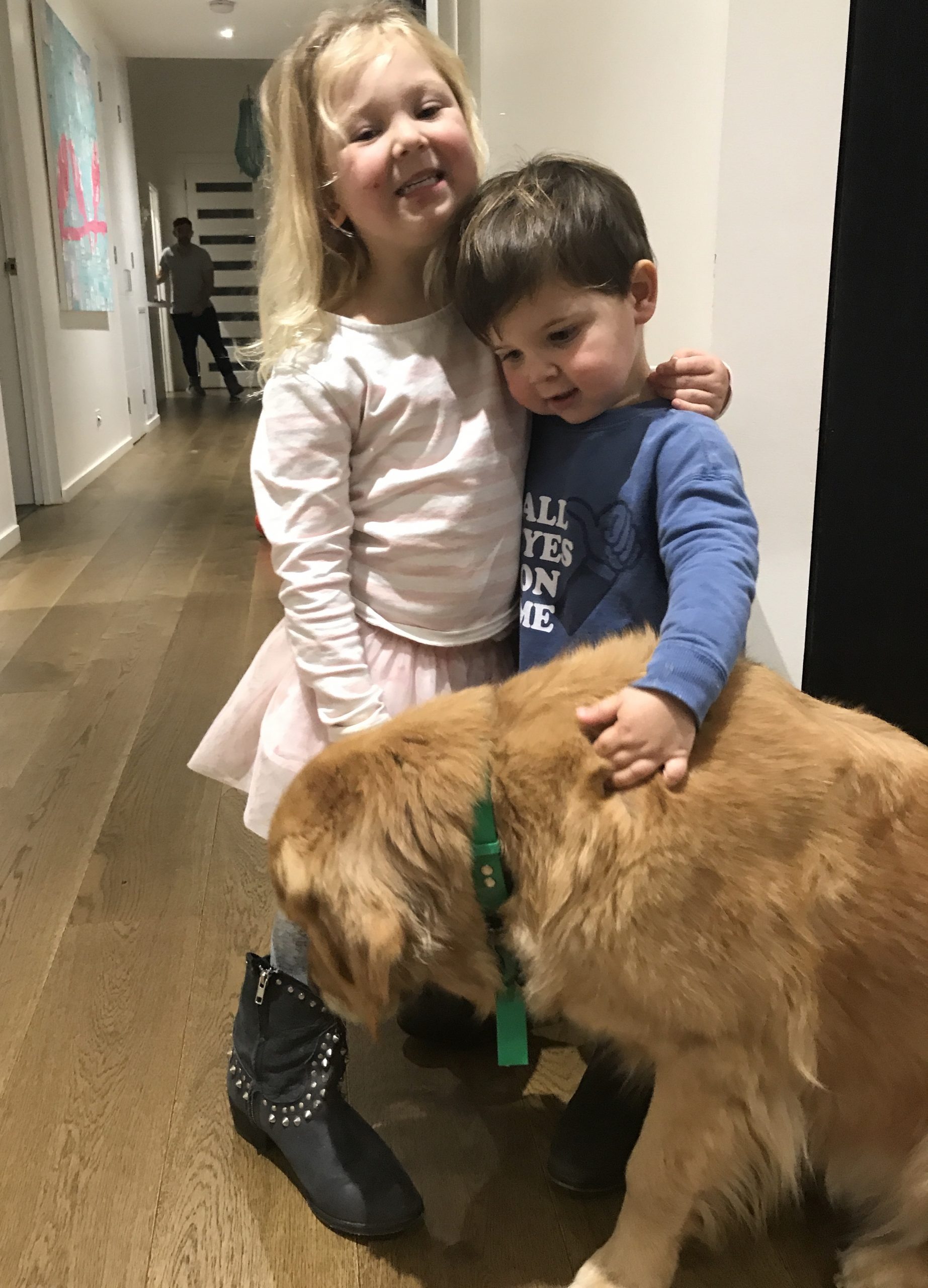From as early as the new born stage, our children mirror our behaviours. Thus, leading by example is a fantastic way to teach children how to interact safely with dogs.

Think about how you interact with your dog and other dogs… really think about it. You might not realise but our children are always watching.
Do you greet all dogs you see without asking the owners or the dog? Do you put your face in your dog’s face and kiss them, or rough and tumble with them in front of your children? I had one mum write into me recently and she explained that her son loves to put his face in her dog’s face and other dog’s faces. She was worried that one day he might get his face bitten. And fair enough, many dogs find this confronting and even scary, especially from an unpredictable child.
I had another mum from kinder ask me what to do with her daughter who is constantly running up to random dogs and just being all over them. I see it often and to be honest with you, it frightens me! My current dog, Cooper, is amazingly tolerant with children, but my old dog, when I was growing up, wasn’t good with strangers. So I have seen it first-hand. My old dog was quite anxious around strangers, so if a child he didn’t know came at him, he probably would have given a big clear warning sign which wouldn’t have been very nice for the child.
A dog will always communicate when feeling stressed or uncomfortable before biting. Hence, learning to recognise when a dog is feeling uncomfortable in a situation is a VERY important skill to have. One that will actually help you protect both your child and your dog. Click here for more on understanding and reading your dogs body language. And here for my Three steps to Teach your child how to safely say hello to dogs.
My advice to all parents who are going through this or something similar is to start thinking about your actions and teaching your children how to interact appropriately with dogs. The best place to start is to lead by example. When you interact with your dog and other dogs you need to keep in mind that your child is most likely watching you and going to mirror your behaviours. So you need to start displaying the correct behaviours that you want your child to display as well.

There are five key skills you can teach your child to do with dogs:
- Teach them to always ask before patting a dog, ask the owner and ask the dog – this goes for your own dog too.
- Teach them to be gentle.
- Teach them that not all dogs like to be patted on the head.
- Teach them that most dogs don’t actually like hugs and kisses like we do.
- Teach them to read the signs when the dog is uncomfortable or has had enough.
Ten key things you must teach your child NEVER to do to dogs:
- Climb on the dog
- Chase the dog
- Pull hair, ears, tail, etc
- Stick fingers in the dog’s eyes, mouth, nose ears, bum
- Play with the dog’s food or water bowls
- Stand over and watch the dog eat
- Annoy/wake a sleeping dog
- Take the dogs food out of a dog’s food bowl
- Take anything out of a dog’s mouth
- Tease a dog with a toy or food that you know it wants
Leading by example in the home.
If you have your own dog at home, rather than approaching your dog for a pat, always call the dog to you. Specifically do this while your child is sitting with you as an opportunity to teach by example. If the dog doesn’t wanted to be patted, then we leave him alone and explain this to your child. But if he does, then this is a great learning opportunity to show your child how to be gentle with the dog and how to pat them nicely. Explain to them that if the dog doesn’t want to be patted, we must leave it alone and never chase after it.
If your child is displaying some of those unwanted behaviours mentioned above, make sure to explain that we don’t do that to our dog or any other dog because they really don’t like it and could growl or bite as a result. Make sure your dog is never backed into a corner and always has a place to escape to away from your children. Like with any of my training tips in the past, it is super important to really reward your child and your dog when everyone is happy and relaxed.
Also have a think about how you play with your dog… do you get really rough with them on the floor when your children are watching? Remember, your child is watching you. Encourage play around your children that is safe- a game of fetch or a game of hide and seek are perfect examples.
Implementing management tools (like baby gates, play pens, crates) will be really important to help seperate your dog and child when you are unable to actively supervise them. Plus, they are a great tool to help give your dog a break from your child.
Click here for a great resource from Family Paws for different management ideas .
Leading by example out of the home.
Use every opportunity you can as a learning opportunity. Every day when we get to kinder, there are dogs tied up out the front and if the owner is not there, I always tell my kids, “we don’t know these doggies and the owners aren’t here to ask for a pat so we don’t touch them, just wave hello from the distance and let’s keep walking.” Even if the dog is SO cute and you just want to pat it, use some self-control, so your child can learn from you. Show your child that you don’t just approach a strange dog. Talk them through it. Point out when you see a cute dog in the street, but tell them that you don’t just go up and pat it. Not all dogs are friendly. Some are old, nervous, sore, anxious or just might not like children. Always explain it to them and lead by example. You must always ask the owner first if you can pat the dog, then we ask the dog, and if both say it’s ok, we ask where he likes to be patted best.
As a parent, you really need to be on top of it. Prevent unsafe situations from occurring.
If you’re out in the street and you see a dog in the distance, be ready. Hold your child’s hand, pick them up if you have to, please just don’t let them run at the dog. When your child does do something that you don’t like/the dog might not like, you need to make sure you stop them in the act and tell them each and every time that that’s not how we behave around dogs, rather we do this… and again, just talking them through it and explaining. Don’t get angry at them – the last thing we want is for the dog to associate a child approaching with you getting angry and stressed out because this could cause them to react. Leading by example. When your child does the correct thing, give lots and lots of praise and let them know how good that was and how proud you are.
Click here to see Family Paws suggestions on Toddler and Dog Safety.

I get it, when your kids are young it’s not always so easy, so make sure to protect your dog too.
My little boy, Paxton, is 2 so I totally get that it’s a hard age when it comes to actually getting them to listen. But the key, especially at this “toddler stage” is consistency and excellent management. Constantly show your child how to interact correctly with dogs and really reward them when they do it correctly. Spend that extra special time with them really showing them the right way. They will eventually get it! Hopefully, if you get on top of it now, with lots of repetition, your kids will get it too. As mentioned above, implementing management tools like baby gates, play pens or crates, will be really important to help seperate your dog and child when you are unable to be actively supervising and to help give your dog a break from your child.
Even if your dog is an angel, all of us have bad days or even bad moments. These are good lessons and life skills to teach your child regardless because you just never know how another dog might react, plus you never know how your dog might react if caught off guard or when sleeping. It’s never worth the risk.
So PLEASE NEVER leave your child alone and unattended with a dog. Always make sure to actively supervise and step in if you feel the dog is uncomfortable or the child is at risk.
Click here for what Active supervision looks like.
If you think your dog is a risk to your children, please seek the help from a positive rewards-based dog trainer/behaviourist ASAP. And just remember, rather than getting angry at your children for doing the wrong thing, really try spending time with them showing them the right way.
For more info on child and dog safety and how dogs communicate make sure to have a read of these articles:
- Our Dogs Are Always Communicating Let’s Learn To Understand Them And Help Prevent Dog Bites To Children
- Good Intentions Aren’t Enough. We Want Dogs To Enjoy Their Encounters With Children Rather Than Just Tolerating Them.
- Three steps to Teach your child how to safely say hello to dogs
- Teach your child to interact safely with dogs and know the warning signs to look for
- Five Important Skills to teach your Dog when Around Young Children
- Managing your Dog when having Visitors and Children Coming Over
If you have any questions on this topic or would like some help or guidance with any of it, please feel free to get in touch.
Mel xox
PS. Make sure to head to our SHOP if you haven’t already! Spoil yourself and your dog!!


